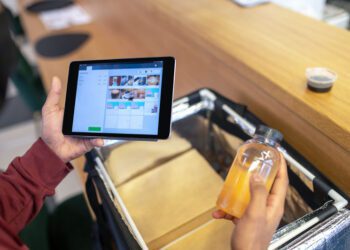The Fast Moving Consumer Goods (FMCG) industry is no stranger to innovation, and in recent years, Augmented Reality (AR) and Virtual Reality (VR) technologies have been making a significant impact on FMCG shopping experiences. These immersive technologies are changing the way consumers interact with FMCG products, brands, and retailers. Here’s a closer look at how AR and VR are transforming the FMCG landscape:
1. Virtual Product Try-Ons:
AR and VR allow consumers to virtually try on products before making a purchase. Whether it’s trying on makeup, clothing, or even furniture, these technologies provide a realistic simulation of how products will look or fit, enhancing the online shopping experience.
2. Interactive Packaging:
FMCG companies are using AR to add interactive elements to their product packaging. Scanning a product’s barcode with a smartphone can unlock additional information, videos, recipes, or promotions related to the product, creating a more engaging and informative experience for consumers.
3. In-Store Navigation:
VR and AR can help consumers navigate large retail spaces more efficiently. By using these technologies, shoppers can access in-store maps, receive personalized recommendations, and easily locate specific FMCG products within a store.
4. Gamification and Engagement:
FMCG brands are leveraging gamification elements within AR and VR apps to engage consumers. This can include interactive games, challenges, and rewards tied to the purchase or use of their products, fostering brand loyalty and enhancing the shopping experience.
5. Product Information Overlay:
AR allows consumers to point their smartphones at FMCG products to access detailed information about ingredients, nutritional facts, usage instructions, and more. This transparency helps consumers make informed choices.
6. Virtual Shopping Assistants:
Virtual shopping assistants powered by AI and AR can guide consumers through their shopping journey. These assistants can provide product recommendations, answer questions, and streamline the shopping process.
7. Enhanced Marketing Campaigns:
FMCG companies are using AR and VR in their marketing campaigns to create interactive and memorable experiences. For example, AR filters on social media platforms can allow users to engage with branded content and share their experiences with their networks.
8. Immersive Brand Storytelling:
AR and VR enable FMCG brands to tell immersive stories about their products and values. Consumers can experience the brand’s history, sourcing process, and sustainability initiatives in a more compelling way.
9. Data Collection and Analytics:
These technologies also provide valuable data on consumer behavior and preferences. FMCG companies can use this data to refine their marketing strategies, optimize product offerings, and improve customer engagement.
10. Adoption Challenges:
While AR and VR offer immense potential, there are challenges to adoption, including the cost of technology, the need for user-friendly interfaces, and the requirement for widespread smartphone compatibility. Overcoming these hurdles is essential for widespread adoption.
Conclusion:
AR and VR technologies are revolutionizing the FMCG shopping experience by providing consumers with interactive, informative, and engaging touchpoints. FMCG companies that embrace these technologies can not only enhance customer satisfaction but also gain a competitive edge in a rapidly evolving marketplace.
As AR and VR continue to evolve and become more accessible, they are likely to play an even larger role in shaping the future of FMCG shopping experiences.




















